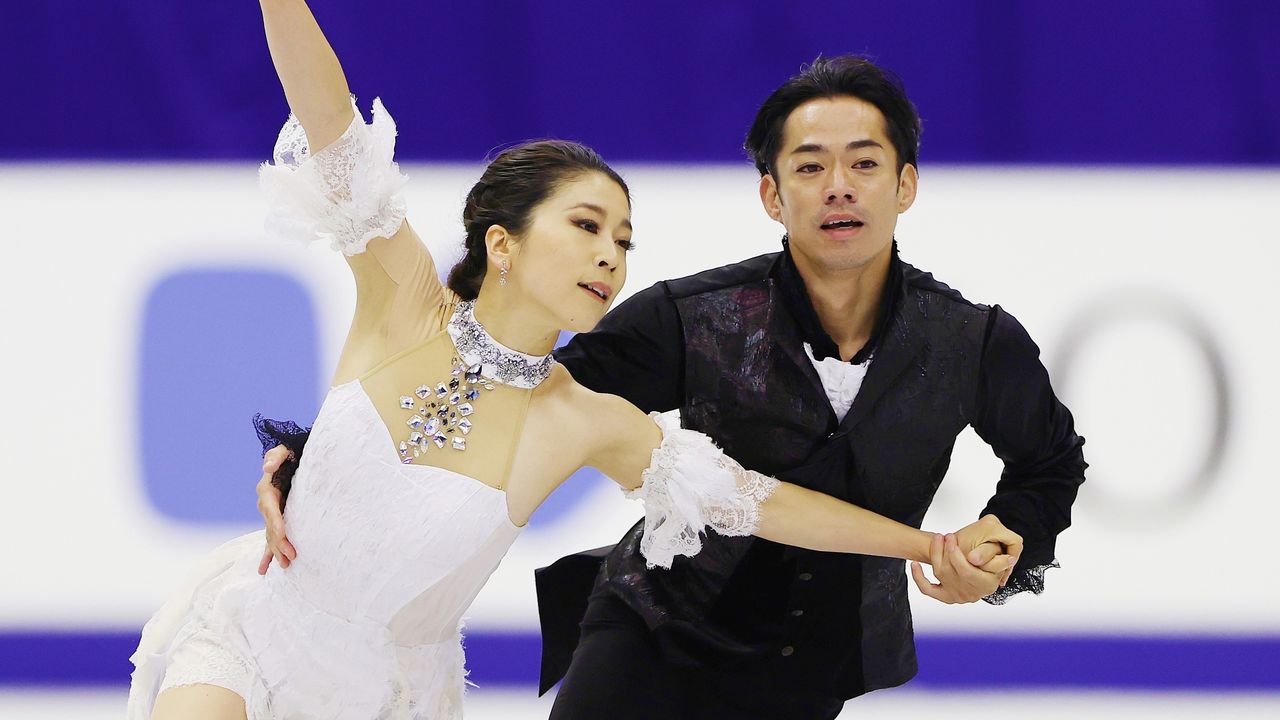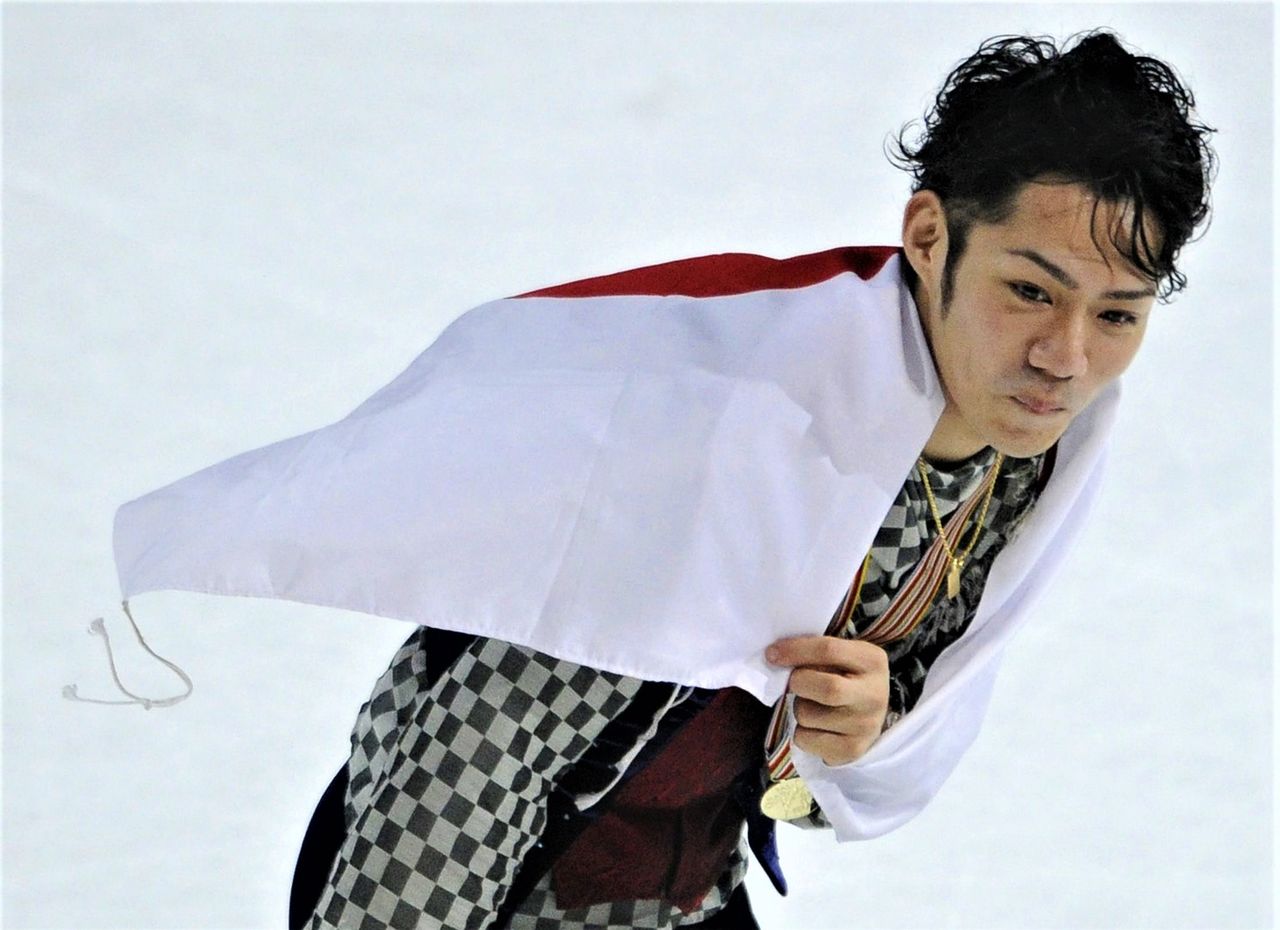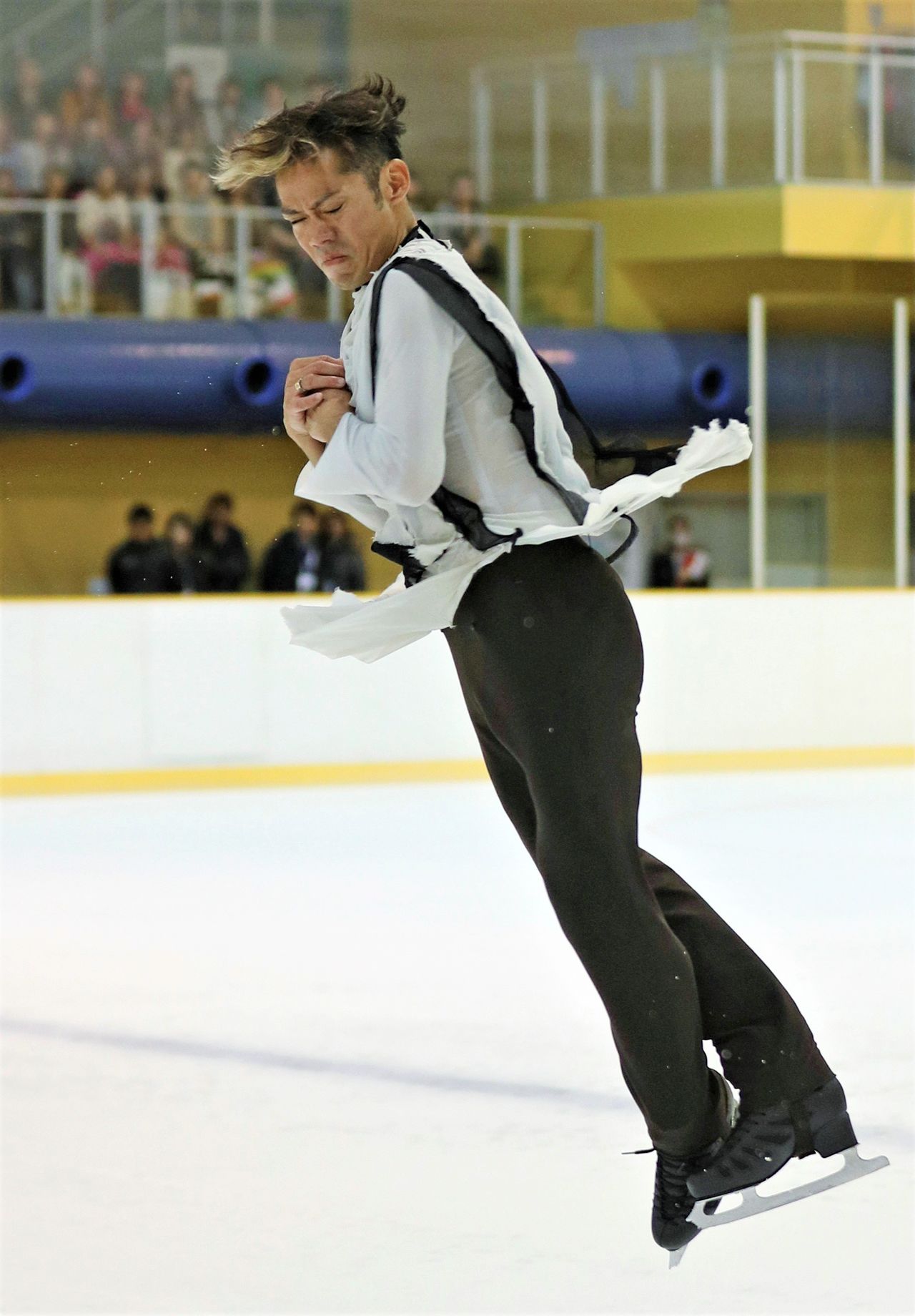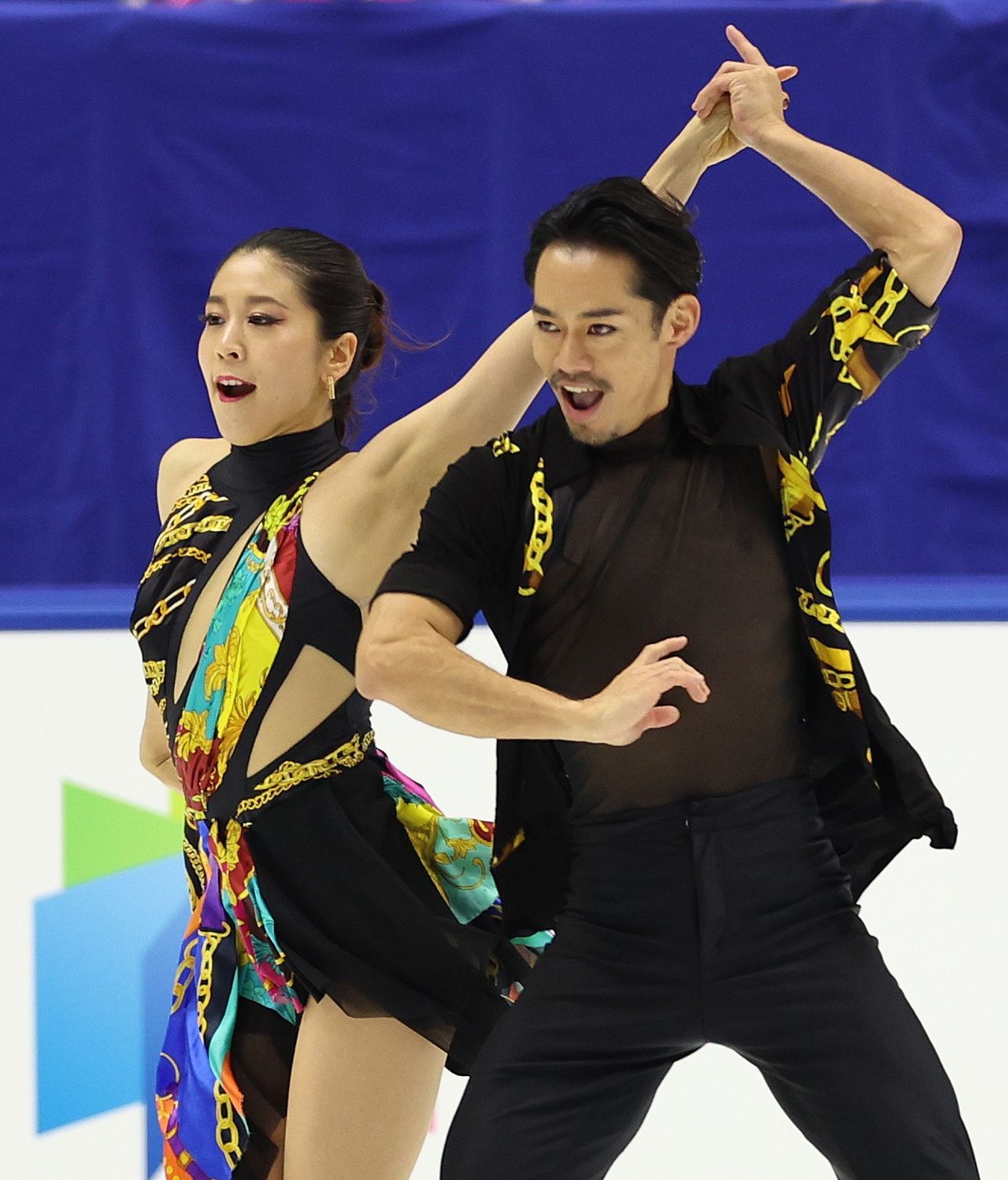
Takahashi Daisuke Piles On the Surprises: A Late Comeback and a Shift to Ice Dancing
Sports- English
- 日本語
- 简体字
- 繁體字
- Français
- Español
- العربية
- Русский
Dual-Event Champion at All Japan Championships
The Tōwa Pharmaceutical Ractab Dome in the Osaka Prefecture city of Kadoma hosted the All Japan Figure Skating Championship on December 22–24, 2022. The event served as a preliminary round for the world championships scheduled for this March at the Saitama Super Arena, an event that skaters all over Japan dream about.
One skater who attracted particular attention at the All-Japan Championship was Takahashi Daisuke, who won his first ice-dancing crown with partner Muramoto Kana.
This was big news not only because this was his first ice dancing championship. Takahashi had returned from retirement as a singles skater whose last championship was in 2011. In other words, it had been 11 years since he took the center riser at the All-Japan gathering. It was also memorable as the first time in Japan that the same competitor had ever won both the single and ice dance events. With this victory, Takahashi did something unprecedented not only in Japan but on the global figure skating stage, which put the whole world’s eyes on him.
Let us go back over Takahashi’s history. He has competed in three Olympic Games: Turin in 2006, Vancouver in 2010, and Sochi in 2014. He placed in all and won bronze in Vancouver, making him the first Asian man to take the winner’s podium in the singles event. In 2010, he also became the first Japanese man to win the World Championship, propelling him to become Asia’s leading skater.

Takahashi won gold on March 25, 2010, in the singles event at the 2010 World Championships in Turin, Italy, at the age of 24. (© AFP/Jiji)
Takahashi announced he was retiring from competition in the fall of 2014. His long-injured left knee was not improving, and others like Hanyū Yuzuru, who had taken gold at Sochi, were now taking center stage.
He remained active as a professional figure skater as well as a TV commentator, but his 2018 announcement that he was returning to active competition made a huge splash.
A Shock Return After Five Seasons Away
His return after a five-season absence was unprecedented not only in figure skating, but in sports in general. It was even more surprising as it came when he was already 32, commonly considered well past the prime figure-skating age.
The primary inspiration for his comeback seems to have been the 2017 All-Japan Championships, where he served as commentator. The games featured athletes at all kinds of career stages, with some skaters competing for a spot on the team for the 2018 PyeongChang Olympics, some in the middle of slow recovery from injury, and others appearing at the games for their final competitive performance. Regardless of their final ranking, every one of them gave their all in the competition. Watching this, Takahashi commented, “I used to think that you shouldn’t be in active competition if you weren’t in it to win, but now I think it’s enough for everyone to keep going for their own reasons.”
His own comeback competition was the Kinki Regional Championships in October 2018. He took third, which advanced him on to the West Japan Championships, where he took first and qualified for the nationals. His momentum showed no signs of slowing, as he went on to take second at the nationals that year.

Takahashi’s performance at his comeback competition, the Kinki Regional Championships on October 7, 2018, at Amagasaki Sports Forest in Hyōgo Prefecture. (© Jiji)
The surprises did not stop there. Even before the next season started, he announced that his return to singles competition would end with the 2019–20 season, at which point he would be moving to ice dancing with Muramoto.
With all Takahashi’s singles success, this unexpected announcement created a buzz far beyond the skating world. The reasoning behind this career change was simple enough, though: He liked ice dancing and wanted to try it. After his return to singles competition, one of his coaches made an offhand comment along the lines of, “Why not give ice dancing a try?” Then, he got an offer from Muramoto, who had just dissolved her relationship with her former partner, and after a test performance together he made up his mind.
The Gap Between Singles and Ice Dancing
Of course, there were worries. Unlike pairs, which is also a two-person event, ice dance must always be performed in close contact, and there is no requirement for jumps in the program. Highly acrobatic performances are banned and lifts—which usually feature the man lifting the woman—are not as high as in pairs competitions. These lifts, which require the man to hold his partner in the air, caused some particular concern. Takahashi, at 164 centimeters in height, is not much taller than his partner Muramoto, coming in at 162 centimeters, and their physiques are roughly the same. People worried whether he would be able to lift and support her in the air.
Another issue was that the skates for singles and ice dancing have different shapes. The blades for ice dancing are shorter and thinner—Takahashi has said, “the feeling is completely different”—so he had to adapt his skating senses to these new blades. Even though Takahashi had been a world-class singles skater, he did not have an easy time with this change.
And while many did warmly support his new attempt, not everyone was so open to the idea. Some doubted he would ever succeed in ice dancing, with all its differences from the singles competitions where he had enjoyed such success, while others felt that he had aged past his peak when he made his comeback in the first place.
But Takahashi proved their doubts misplaced. He and Muramoto demonstrated incredible growth between their debut in the 2020–21 season and the next. At the November 2020 NHK Trophy during their debut season, they placed third out of three with 157.25 points. However, at the November 2021 Warsaw Cup they took second with 190.16 points.
Then, although an error at the All-Japan Nationals kept them out of the Japanese Olympic team’s only open slot for the Beijing Games, they were selected for the World Championship later in the season. This breakthrough success surpassed all expectations from others in the figure skating world.
Since Takahashi’s stated goal had been to skate at the Beijing Olympics, he had planned to retire after the end of the 2021–22 season, but decided to continue after reconsideration. That period of indecision delayed his preparations for the next season, but he has since been polishing his performance with each competition.
The Passions Driving a Veteran’s Evolution
Takahashi has been in the spotlight ever since his comeback, with his performance warming even the coldest of receptions. That is due not only to his unexpected success, but also to the way he has brought the same expressive power that helped make his name in the singles competitions to his ice dancing. Takahashi has been working closely with Muramoto, of whom he has openly made statements of respect and trust, to build ever more challenging programs with every season. Those have won acclaim both at home in Japan and overseas.

Takahashi and Muramoto, known collectively as “Kanadai,” perform at the 2022 All-Japan Championships on December 12 at the Tōwa Pharmaceutical Ractab Dome. (© Jiji)
He must have made enormous efforts in training and nutrition, too, as his physique is far more muscular than during his singles career. That has cleared away any misgivings people had over the similarity in physique he and Muramoto once showed. He has also overcome any obstacles posed by the differences from singles performance, including the skates themselves.
After his win at the nationals, Takahashi himself commented, “I guess you can still grow at the age of thirty-six.” Successfully making those words a reality, though, is nothing short of phenomenal. What has kept him going through that growth?
I am reminded of some things he said at interviews he has had since his 2018 comeback, like, “I think there are some expressions and attractions that only figure skating has, and I think it still has more potential—meaning, I think it is still more profound.” Or, “I want to express myself through skating as long as possible.” But above all, I think this is what sums it all up: “I want to skate my whole life.”
The desire as an athlete to compete and take his expression and skating to the next level. To be active as a figure skater as long as possible. Those are the passions that have supported Takahashi’s extraordinary record and longevity.
This is an unprecedented approach to being a figure skater, and one reason why this new image of skating being broadcast from Japan to the world is attracting so much attention and praise everywhere it appears.
(Originally published in Japanese. Banner photo: Takahashi and Muramoto performing in the free dance event of the NHK Trophy games on November 19, 2022, at the Sekisui Heim Super Arena in Sapporo, Hokkaidō. © Jiji.)